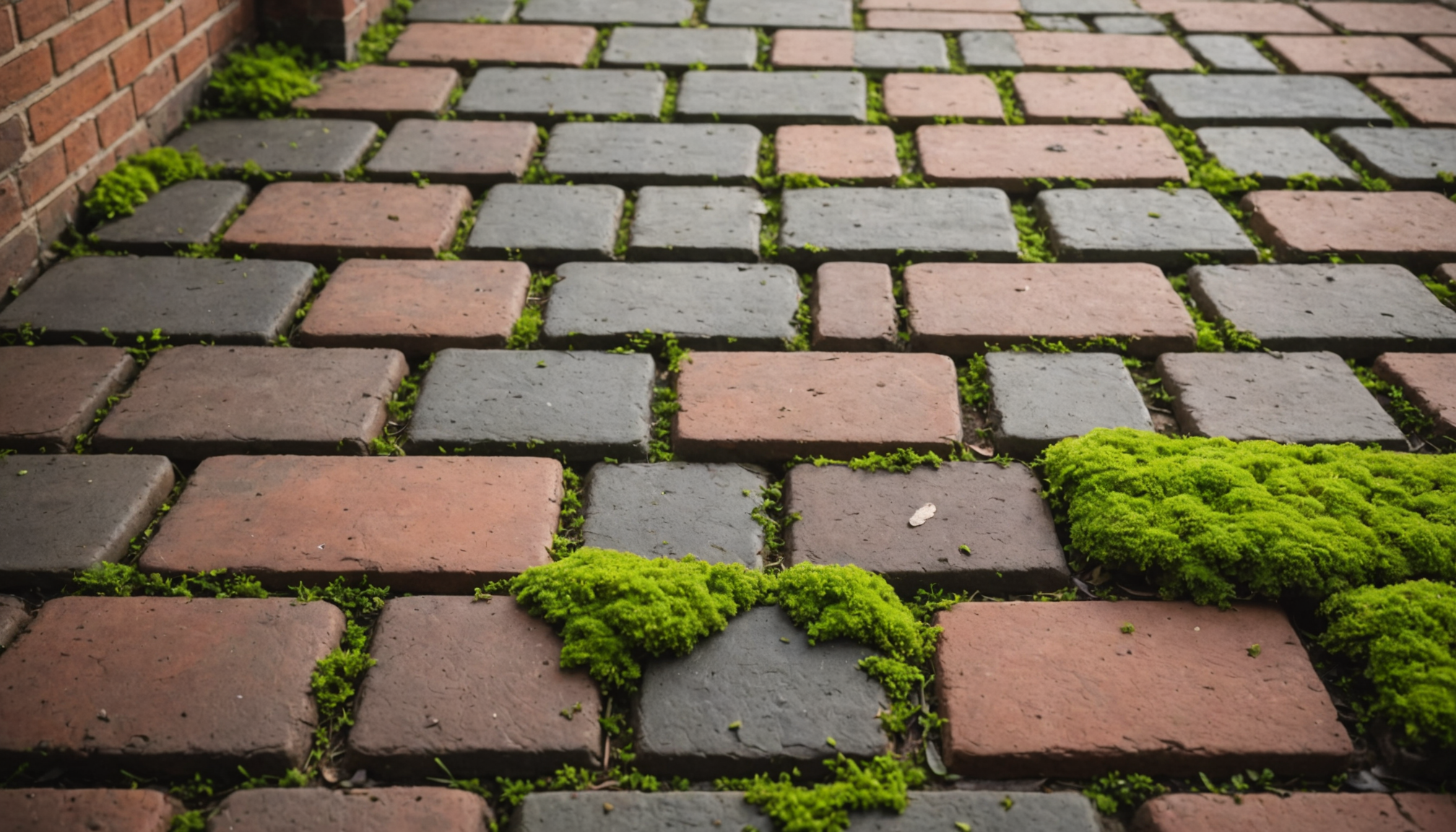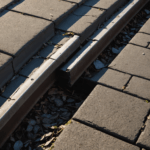Before diving into the task of cleaning your patio, it’s crucial to assess the materials you are working with. Understanding the specific materials that make up your patio flooring and surrounding elements will not only guide you in selecting the right cleaning techniques and products but also help prevent any damage during the process. This step is essential to ensure that your patio remains in top-notch condition.
Patios can be constructed from a variety of materials, each having unique characteristics and requirements. Common patio materials include concrete, stone, brick, wood, and composite. Here’s a detailed look at each type and the considerations you need to keep in mind:
| Material | Characteristics | Considerations |
| Concrete | Durable and long-lasting, often seen in basic gray but can be stained or textured. | Be mindful of using harsh chemicals that may degrade the surface; consider sealing if not already done. |
| Natural Stone | Includes limestone, slate, and sandstone, known for beauty and variation. | Avoid acidic cleaners; sealing may be necessary to prevent water penetration and staining. |
| Brick | Classic and rustic, bricks can vary in color and texture. | Weeds and moss often grow in between bricks, requiring specific removal techniques; avoid power washing that may dislodge mortar. |
| Wood | Natural aesthetic appeal, ranges from softwoods to hardwoods. | Regular sealing and staining to prevent rot and degrading; use brushes and gentle cleaners. |
| Composite | Made from wood fibers and plastic, offering weather resistance and low maintenance. | Check manufacturer recommendations for cleaning products to avoid damage. |
Recognizing the materials involved helps in making informed decisions about whether to tackle the cleaning yourself or explore the option of hiring pros who are specialized in handling specific materials. Should you notice any signs of damage or significant wear, it may also indicate the need to incorporate or update insulation materials beneath the surface, especially in regions with harsh weather trends.
Thoroughly assessing your patio materials not only forms the foundation for effective cleaning strategies but also extends the lifespan of your outdoor space. By ensuring that your methods align with material requirements, you are safeguarding your investment while maintaining an inviting environment for relaxation and entertainment year-round.
essential cleaning tools and supplies
To effectively clean your patio, arming yourself with the right tools and supplies is essential. This preparation not only makes the cleaning process more efficient but also ensures you’re well-equipped to handle any unexpected challenges. Here’s a comprehensive list of tools and supplies you should have on hand:
1. Brooms and Brushes
– A sturdy push broom is ideal for removing loose dirt and debris. Opt for a broom appropriate for your patio’s surface type. For example, a soft-bristle broom works well for delicate surfaces like softwood, while a stiffer option may be suitable for concrete or brick.
– Smaller brushes or scrub brushes can help tackle tight spots and grime. If your patio involves stone or wood, a brush with natural bristles is gentler and less likely to cause damage.
2. Hose or Pressure Washer
– A garden hose with an adjustable spray nozzle is a versatile tool for rinsing away dirt and detergent.
– For more intense cleaning, especially on concrete or synthetic materials, a pressure washer can be highly effective. However, use caution and adjust the settings to avoid damaging softer materials like wood or mortar between bricks.
3. Buckets and Containers
– These are necessary for mixing cleaning solutions. Ensure they are clean and clearly labeled if you are using multiple solutions to avoid cross-contamination.
4. Cleaning Solution
– Use a solution appropriate for your patio material. Commercial cleaners are available for specific surfaces, but a homemade mixture of water and mild dish soap can serve as a general solution.
– For eco-friendly options, consider vinegar and baking soda mixtures, particularly effective for resistant stains on bricks or stones.
5. Protective Gear
– Gloves are essential to protect your hands from harsh cleaning chemicals and abrasive surfaces.
– Safety goggles are recommended if using a pressure washer or working with potent cleaning agents.
6. Mop or Sponge
– These are useful for dabbing and applying cleaning solutions, especially on smaller, more delicate areas.
– Ensure they are consistently rinsed to avoid spreading dirt rather than removing it.
7. Towels or Rags
– Keep these on hand to dry surfaces immediately after cleaning, especially for wood and natural stone, to prevent water absorption and potential damage.
8. Tools for Tackling Problem Areas
– A putty knife or scraper can help remove tough residues without damaging the surface.
– For weeding between brick or stone joints, a specialized weeding tool or even a versatile tool like a butter knife can be highly effective.
Ensuring you have these tools and supplies ready before beginning the cleaning process will save you time and effort. More importantly, it will help safeguard your patio’s materials, maintaining their integrity and appearance for seasons to come. By equipping yourself correctly, you not only streamline your cleaning efforts but also ensure that your patio remains welcoming and well-maintained amid ever-changing weather trends.
step-by-step cleaning process
Start the cleaning process by first clearing your patio of all furniture, planters, or decorative items. This comprehensive preparation allows you to access every inch of the surface without obstruction and ensures that no part of the patio is left untouched. Begin by using a broom to remove loose dirt, leaves, and debris. This initial sweep is crucial because any abrasive particles left behind can cause scratches in softer materials such as wood or composite during more intense cleaning stages.
Once the surface is clear, it’s time to pre-treat any noticeable stains or heavily soiled areas. Apply the appropriate cleaning solution you’ve prepared specific to your patio’s material—whether it’s a commercial product or a homemade mixture. Allow the solution to sit for a few minutes to penetrate the dirt and loosen any stubborn grime. This step is particularly important for addressing areas prone to stubborn stains, like those caused by food spills or plant residues.
With the cleaning solution doing its work, it’s time to tackle the broader cleaning process. Using your garden hose or a controlled pressure washer, start from one end of the patio and work systematically to the other. The trick is to maintain a consistent flow of water to rinse away loosened dirt effectively. Ensure you adjust the pressure settings accordingly to avoid damaging more delicate surfaces such as brick mortar or softwood.
Next, utilize brushes for more intensive scrubbing, particularly on tougher spots or to address mold and mildew. For concrete or brick patios, use a brush with stiff bristles, while for wood and composite, opt for softer, natural bristles to prevent damaging the surface fibers. A circular motion can help dislodge dirt more efficiently, especially in textured materials like stone or stamped concrete.
After scrubbing, thoroughly rinse the entire patio again to remove all traces of soap and debris. This step is essential not just for cleaning but also to avoid any residue that might attract more dirt in the future. Use buckets of clean water to manually rinse areas that a hose might not completely clear, ensuring there’s no soapy film left behind.
Finally, use towels or rags to dry the surfaces promptly. For materials sensitive to water such as natural stone or unsealed wood, this prevents potential water damage. Quickly drying the surfaces is also beneficial in combating any mold resurgence, as standing water is often a culprit in mildew growth.
By following this detailed and thorough step-by-step process, you’ll ensure your patio is not only clean but also well-preserved, ready to withstand both daily use and the effects of varying weather trends. This routine, when performed seasonally, can reduce the need for hiring pros for frequent deep cleaning and will keep your outdoor area in pristine condition for longer.
tackling tough stains and mold
When faced with the persistent challenge of tough stains and mold on your patio, a strategic and informed approach is key to restoration. Mold and stubborn stains can compromise the aesthetic and longevity of your outdoor space, so it’s important to handle them with care. First, identify the type and source of the stains. Common offenders include mold and mildew, caused by moisture buildup, as well as rust, oil, and organic stains from leaves or food spills.
For mold and mildew, the first line of defense is an appropriate mildewcide or a fungicide cleaner, which specifically targets and eliminates fungal growth. Alternatively, a solution of vinegar and water can also be effective as an eco-friendly option. Apply your chosen cleaner directly to the affected area and let it sit for about 10 to 15 minutes. This dwell time is crucial as it allows the solution to penetrate deeply and break down the mold’s structure.
Next, use a stiff-bristled brush to scrub the moldy sections. For delicate surfaces, such as wood or certain natural stones, consider using softer bristles to avoid damage. Work the brush in a circular motion to lift mold from textured surfaces. Remember that consistency is key; thoroughness in this step will prevent quick regrowth and prolong the period between cleanings.
Stubborn stains such as rust and oil demand a different approach. For rust, lemon juice or a specialized rust remover can effectively dissolve iron stains. Apply the rust remover or lemon juice generously and scrub with a brush, leaving it to sit for a bit before rinsing. Oil stains, frequently found around grilling areas, can be tackled using a mixture of baking soda and dishwashing liquid. Let this paste sit on the stain for a while, then scrub and rinse thoroughly. Do bear in mind that for particularly tenacious stains, you may need to repeat treatments or consider hiring pros for a deeper intervention.
To prevent future occurrence of mold, it’s wise to improve patio drainage and ensure good airflow around the space. Fix leaks promptly and consider using a water-resistant sealer for porous surfaces like stone and brick. This not only safeguards against moisture but can also serve as an additional protective layer against stains, aligning with effective maintenance trends.
Remember that treating mold and tough stains is not just about cleaning for aesthetic purposes—it’s an essential part of maintaining your patio’s integrity. Addressing these challenges promptly reduces the long-term impacts on the material and prevents structural deterioration. By integrating these techniques into your regular cleaning routine, your patio can remain a healthy and inviting space, capable of withstanding seasonal changes and ensuring longevity.
maintaining your patio year-round
To ensure your patio remains a welcoming sanctuary throughout the year, it’s essential to establish a maintenance routine that aligns with the seasonal demands of your climate and the materials of your outdoor space. Regular maintenance guards against wear and tear induced by weather extremes and everyday use, making future cleaning sessions easier and less time-consuming.
Start by developing a schedule for routine checks. These checks should include inspecting your patio for any visible signs of damage, such as cracks in concrete, loose or chipped bricks, fading or peeling in wood finishes, and buildup of dirt or debris. Staying vigilant about these small issues helps prevent more significant problems down the road, saving you both time and money by possibly avoiding the need for hiring pros for major repairs or restorations.
Incorporating protective measures can significantly enhance the durability of your patio. For instance, sealing surfaces made of porous materials like brick and natural stone will prevent water penetration, which leads to crumbling and mold growth. Similarly, applying a weather-resistant finish to wood patios adds a layer of protection against moisture and UV rays. These proactive steps give your patio the resilience needed to endure both winter’s chill and summer’s heat—a reflection of effective maintenance trends aimed at sustaining your patio’s charm and functionality.
Clearing your patio of leaves, snow, and other debris is another ongoing task. Leaves, when left to accumulate, not only create unsightly stains but also foster conditions ripe for mold growth. During fall and winter, if snow is a concern, ensure to sweep it off regularly with a broom to prevent moisture from seeping into and undermining materials. Remember to use de-icing products that are safe for your specific patio materials to avoid unnecessary damage.
Enhancing airflow around your patio can prevent the recurrence of mold and mildew, especially if you live in a high-humidity area. Trim nearby foliage regularly to allow sunlight and fresh air to effectively reach your patio, speeding up water evaporation after rainfalls. Not only does this practice keep mold at bay, but it also creates an inviting environment conducive to outdoor relaxation.
Lastly, rearranging furniture and several décor elements seasonally allows you to check areas that may remain unnoticed and collect dirt. Regular repositioning of patio elements prevents uneven wear and maintains the overall balance and aesthetic of the space.
Incorporating these maintenance strategies year-round not only preserves the aesthetic and structural integrity of your patio but also proves cost-efficient in the long run by reducing the frequency of needing to hire pros for extensive cleaning or repairs. Embracing these trends in patio care ensures your outdoor haven remains a clean, enjoyable retreat for you and your guests, come rain or shine.


